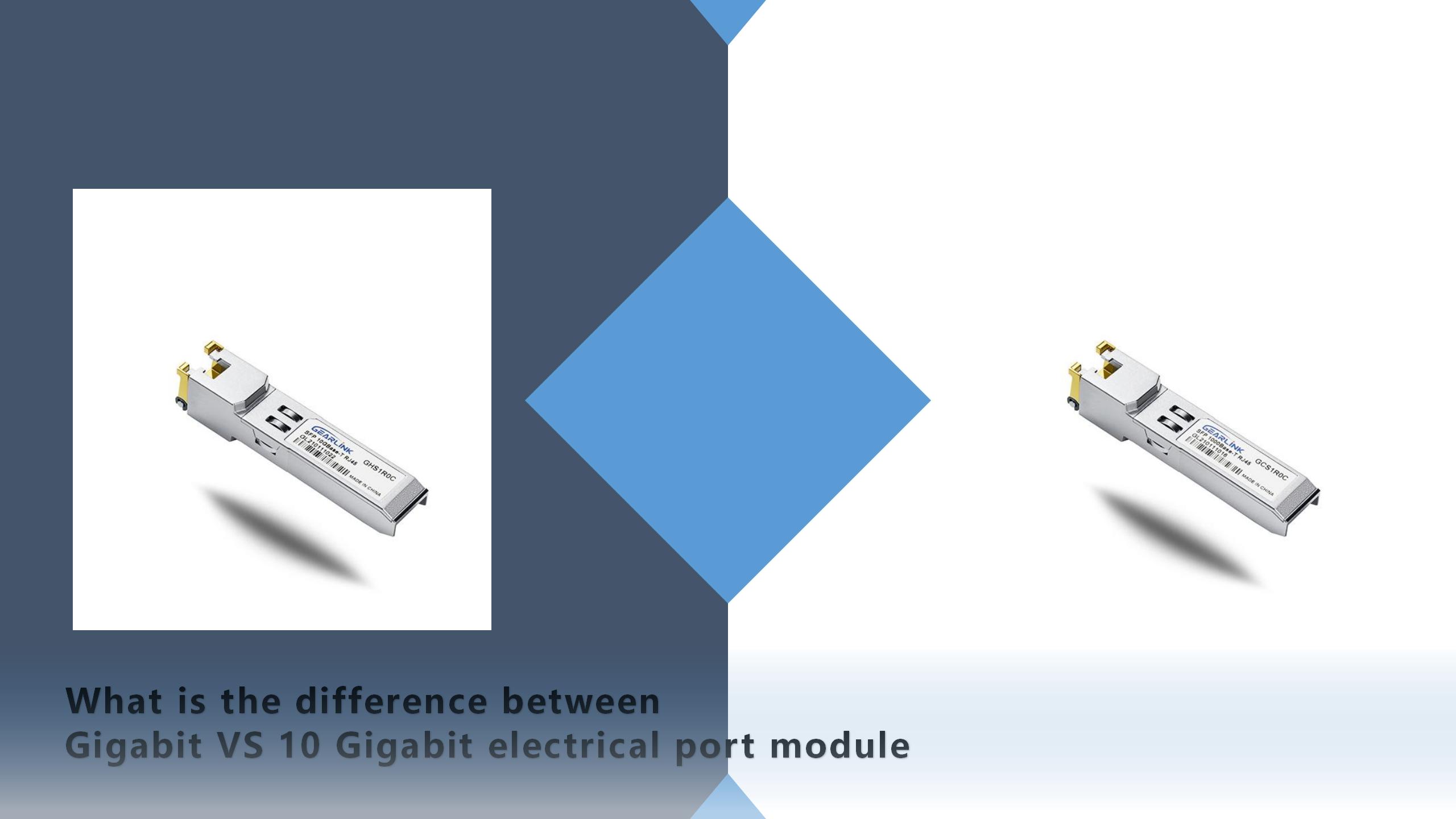Abstract: With the advent of the digital age, the network has become an indispensable part of people's life and work. Among them, the copper transceiver, as an indispensable part of network equipment, has also attracted widespread attention. So, what is the difference between a Gigabit copper transceiver and a 10 Gigabit copper transceiver? This article will answer you one by one.
Gigabit copper transceiver is an optical-to-copper module suitable for Gigabit Ethernet. demand for mega SFP connectivity solutions.
Gigabit copper transceivers have a wide range of application scenarios. First of all, Gigabit Ethernet technology can meet the needs of most network devices today. It converts SFP optical port into RJ-45 copper port, which is specially designed for high-speed communication with a maximum rate of 1.25Gbps; it is suitable for small and medium-sized enterprises and individual users' LAN, office network, small data center, and enterprise internal network. . Secondly, the Gigabit copper transceiver can also provide excellent performance in long-distance transmission (≤100m), high-speed data transmission and efficient network load balancing.
The 10G SFP copper transceiver is a higher-speed optical-to-copper module that supports the 10G Ethernet network, also known as the 10G SFP copper transceiver. The maximum data transmission rate can reach 10000Mbps, and the transmission distance is ≤30m. Among them, 10 Gigabit Ethernet cards are mainly used in scenarios such as high-speed transmission, video surveillance, and data centers.
Compared with the Gigabit copper transceiver, the 10 Gigabit copper transceiver has a higher data transmission rate and can be applied to higher peak network loads, higher bandwidth and higher instantaneous data transmission requirements. Using 10GBASE-T SFP+ interface, it can be used through switches, routers, servers and other equipment, especially in the fields of cloud computing, big data and data centers, more and more enterprises and organizations have begun to adopt 10 Gigabit Ethernet technology.
Before choosing a Gigabit copper transceiver or a 10 Gigabit copper transceiver, it needs to be determined according to actual needs and budget. Try not to use them interchangeably. For users who need to meet general network usage, Gigabit copper transceivers are sufficient. For users with high load and high-speed data transmission, it is recommended to choose the 10 Gigabit copper transceiver.
The data shows that between 2019 and 2024, the global Ethernet switch market is expected to maintain steady growth. At the same time, efficient, reliable, and secure network equipment will become a must for the industry and a sharp tool for enterprise expansion.
In short, with the continuous development of advanced technologies such as cloud computing, big data, 5G, and the Internet of Things, the application scenarios of network equipment are also expanding. At the same time, the performance improvement of Gigabit copper transceiver and 10 Gigabit ecopper transceiver will also become one of the important trends in network development.


